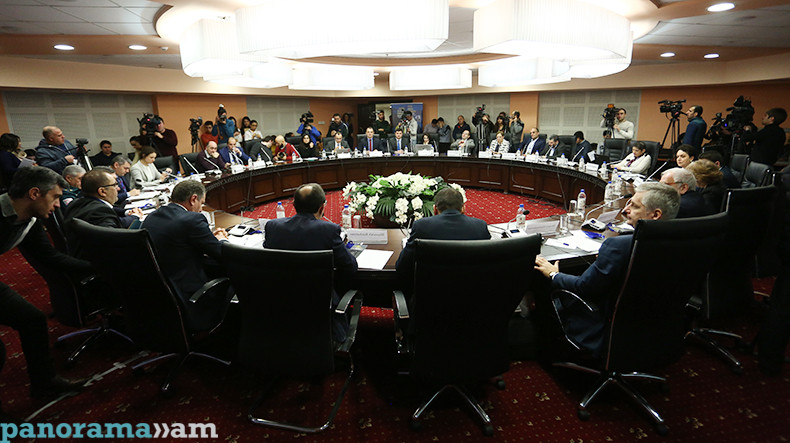
International conference “Breaking the Siege of Stepanakert: 25 years later” kicks off in Yerevan
International conference entitled “Breaking the Siege of Stepanakert: 25 years later” has kicked off in Yerevan on Wednesday that has brought together number of Armenian and foreign experts to reflect on the Artsakh war, deliver analysis on the inevitability of the break of Stepanakert city blockade in the winter months of 1992 as well as draw parallels with the military actions unleashed by Azerbaijan in April, 2016.
The event, which is organized by the Public Relations and Information Center State Non-commercial Organization, is attended by military reporters who used to work in Artsakh in 1991-1992 as well as experts of international law both from Armenia and abroad.
The Director at the Public Relations and Information Center Ara Saghatelyan noted in his opening remark that the conference is being held ten days earlier of the date when Stepanakert siege was broken aiming to disseminate the truth and the reality for the international community, to present the whole picture how the developments unfolded in Karabakh starting from 1987-88.
“We should present the wider picture and demonstrate that no alternative existed or could exist except the military operation in Aghdam direction,” Saghatelyan said.
In his words, the relevancy of holding the conference has been repeatedly stressed in private interactions and contacts, yet the conference has brought together the experts who had thoroughly studied the topic.
Mr. Saghatelyan reminded that the first film created by the Public Relations and Information Center produced in 2012 was about the Aghdam operation that partly covered the situation in Stepanakert.
“A new film is scheduled to be screened in the coming days that will comprehensibly showcase to the international community the essence of the humanitarian disaster that hit Karabakh and the capital city Stepanakert, in particular. I think whenever our neighbors try to speculate over the historical events in the future, people having access to the translated version of the film would at least have the understanding of the inevitability of the so-called Khojalu military operation in Aghdam direction,” Saghatelyan said.
Brief description
The siege of the Nagorno Karabakh Autonomous Region started in Autumn 1989, when Azerbaijan blockaded railroad lines to Armenia, while roads passing near the Azerbaijani settlements became extremely dangerous. As a response to the calls by Karabakh people for reunification with Armenia, the residents of Stepanakert were trapped by Azerbaijanis tightening of the blockade with all essential supplies, including water, electricity, food and medicines virtually cut off.
It was in these conditions of the total blockade that since September 2 1991 Azerbaijan additionally subjected adjacent settlements of Stepanakert to shelling and bombardments, including the airdrome near the Azerbaijani Khojalu village at a time when atrocities against Armenians were widespread.
To silence the Azerbaijani intensive and constant shelling, break the imposed blockade and save the starving the city population from annihilation, Armenian self-defense forces were compelled to get reorganized in late February, 2012 and liberate the Khojalu village (Ivanyan), while the Lachin (Berdzor) corridor was ultimately opened in May 18.
Two Azerbaijani reporters - Chingiz Mustafayev and Eynulla Fatulayev - who objectively documented and voiced the accurate record of the historical events had different fates. Mustafayev was killed months after the operation while Fatulayev after serving his four-year imprisonment, was later freed and established a news portal committed to intensive praising and glorification of Azerbaijani president Ilham Aliyev.
Newsfeed
Videos






























